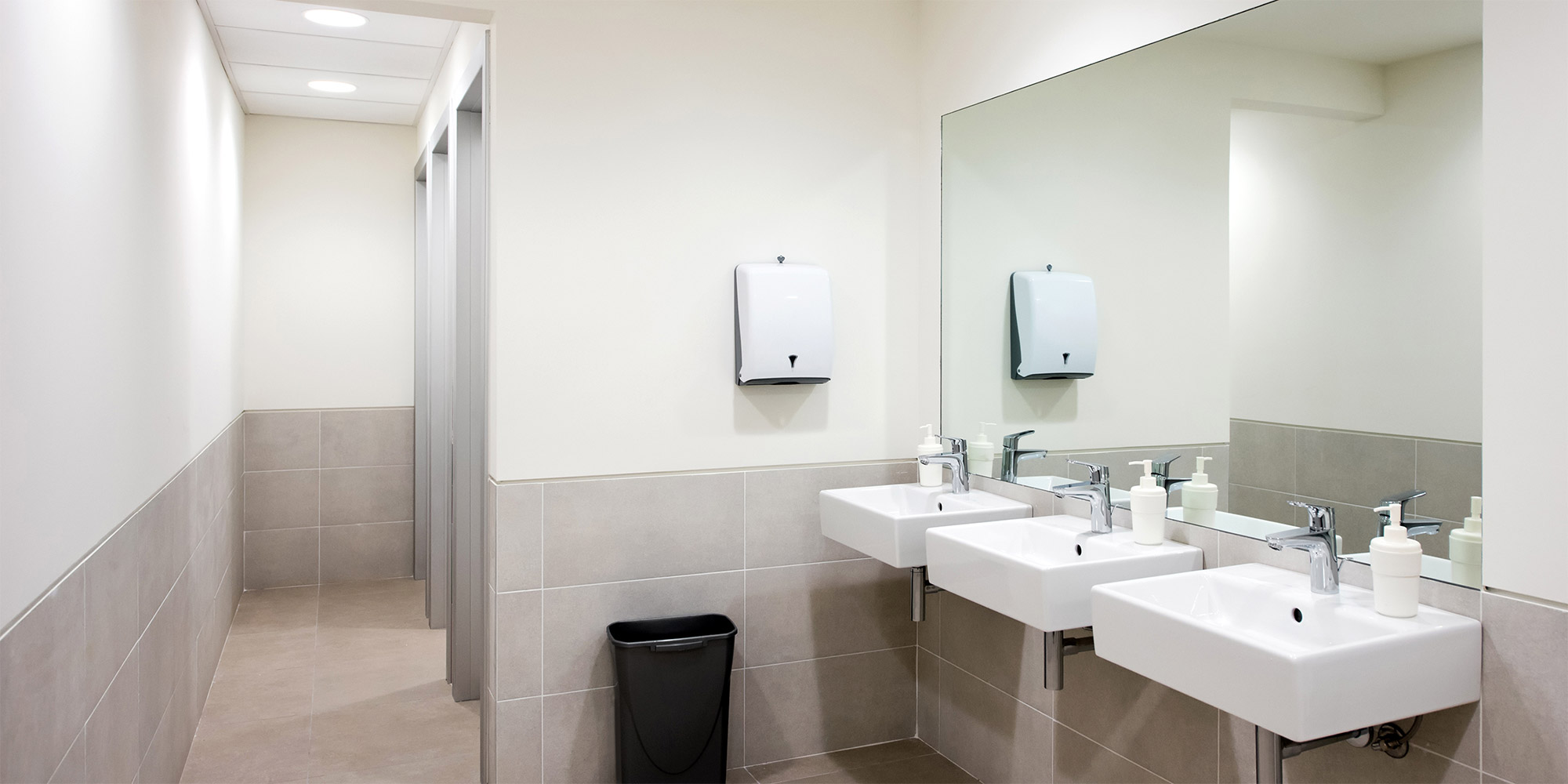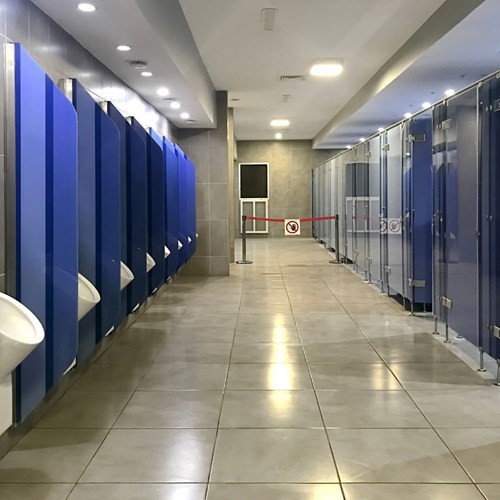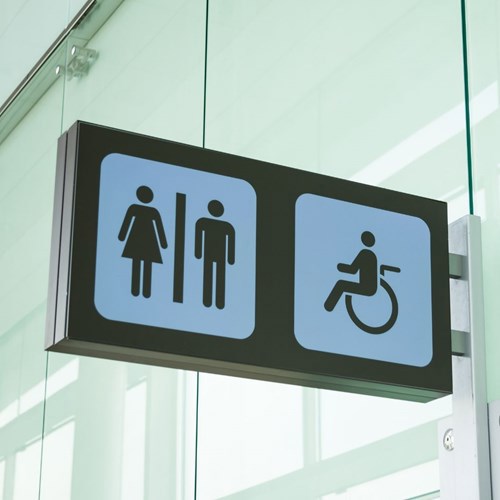
Public bathrooms are constantly used. Whether a premise is busy or not, facilities are usually used by people multiple times a day. For this reason, they often remain damp, which can promote moulding. Though not all people will be sensitive to mould, this moulding can cause sickness in some, which can take them out of work and away from doing what they enjoy. Hence, it’s essential to guarantee bathroom mould is kept at bay at all times to prevent infection from spreading. As an added bonus of controlling mould in public bathrooms, the space will have a cleaner appearance, which can improve mood.
The following blog will, therefore, show how business owners and cleaning staff can use the Rubbermaid Commercial Products range to control bathroom mould.
Clean and dry bathrooms regularly with Rubbermaid HYGEN microfibre
As mentioned, due to their frequent use, bathroom facilities are rarely completely dry. Water from hand washing is often left around taps, which can make the outskirts of fittings, sink basins and the floor a breeding ground for mould. However, this is also the perfect growing condition for bacteria, particularly if the water remains stagnant for long periods.
Though a business may have a cleaning service that attends a building once every few days, they should also ensure they actively dry these spaces at the end of each day. People operating the premises can best remove the presence of mould and bacteria using HYGEN launderable microfibre. This is because these innovative microfibre cloths have been formulated to pick up pathogens from surfaces. They should carry two cloths with them when cleaning bathroom facilities, especially those that are poorly ventilated. The first cloth should be used in conjunction with a sanitiser or anti-mould solution of the business owner’s choosing. The second should be a dry cloth. This allows it to pick up any large spills of water, which could otherwise turn to bathroom mould overnight.

Ventilate at all times to prevent bathroom mould
As touched on above, bathroom mould grows in damp environments. So, it’s vital that property owners take all of the steps to avoid excess liquid build-ups in bathrooms. On top of drying the sinks and toilet areas every evening, this can also be done with good ventilation. If a public bathroom has a fan system or windows, it’s highly recommended they are turned on and opened respectively. This allows air into the building, which can dry minor spills within only a few minutes.
If a bathroom doesn’t have an internal ventilation system, business owners can consider installing a fan above the basins to cut down the speed that bathroom mould grows.
It’s important to note that ventilation is not a substitute for cleaning and sanitisation. Any water that dried on surfaces or floors will still have the opportunity to develop bacteria. So, they must still be sanitised at the end of each day using Rubbermaid HYGEN. The benefit of ventilation, to clarify, is that it gives mould less of an opportunity to grow, which will reduce bacteria and mould, but won’t eliminate it.
Mop regularly using launderable mop heads
Mould can grow on all surfaces in a bathroom, this includes the sinks, the walls and the floors. While Rubbermaid HYGEN Microfibre will ensure that mould is eradicated, this does not consider bathroom mould on the floor. So, people must take the time to give their bathroom facilities a brief mop every close of business. This can guarantee that water from hands and other liquids is eradicated every night. Though not all facilities are the same, this is particularly important in bathrooms with grouted floors, as fluids can seep into the cracks, causing moulding beneath tiles and flooring.
The best solution is to mop bathroom floors using Rubbermaid Launderable Microfibre Mop Heads at the end of each day. Mop heads should be paired with a sanitiser of the owner's choosing to enhance the cleaning process and remove any bacteria or mould that has already begun forming. As the cloths are launderable, this also has a positive impact on a business’s carbon footprint and can place them in a positive light amongst customers.
Should someone notice a large spill throughout the day, such as a puddle on the floor, they must eradicate it immediately to cut down the likelihood of extreme mould and bacteria growth.

Repair any cracks or damage immediately
When water seeps into cracks and bathroom damage, it can lead to invisible mould. This mould can continue to grow, which can become a hazard. It may even lead to premises shutdown should a deep clean be required. Therefore, business owners should always examine their areas to guarantee the chances of bathroom mould growing are as minimal as possible.
Some examples of damage in public bathrooms include:
Rubbermaid Commercial Products is here to keep commercial properties clean and infection-free
The Rubbermaid Commercial teams know how difficult it can be to manage bathroom mould, especially in high-capacity settings. When in need, we are always happy to recommend the appropriate products and cleaning techniques to ensure your bathroom facilities remain mould and bacteria-free. Contact us to find out more today.